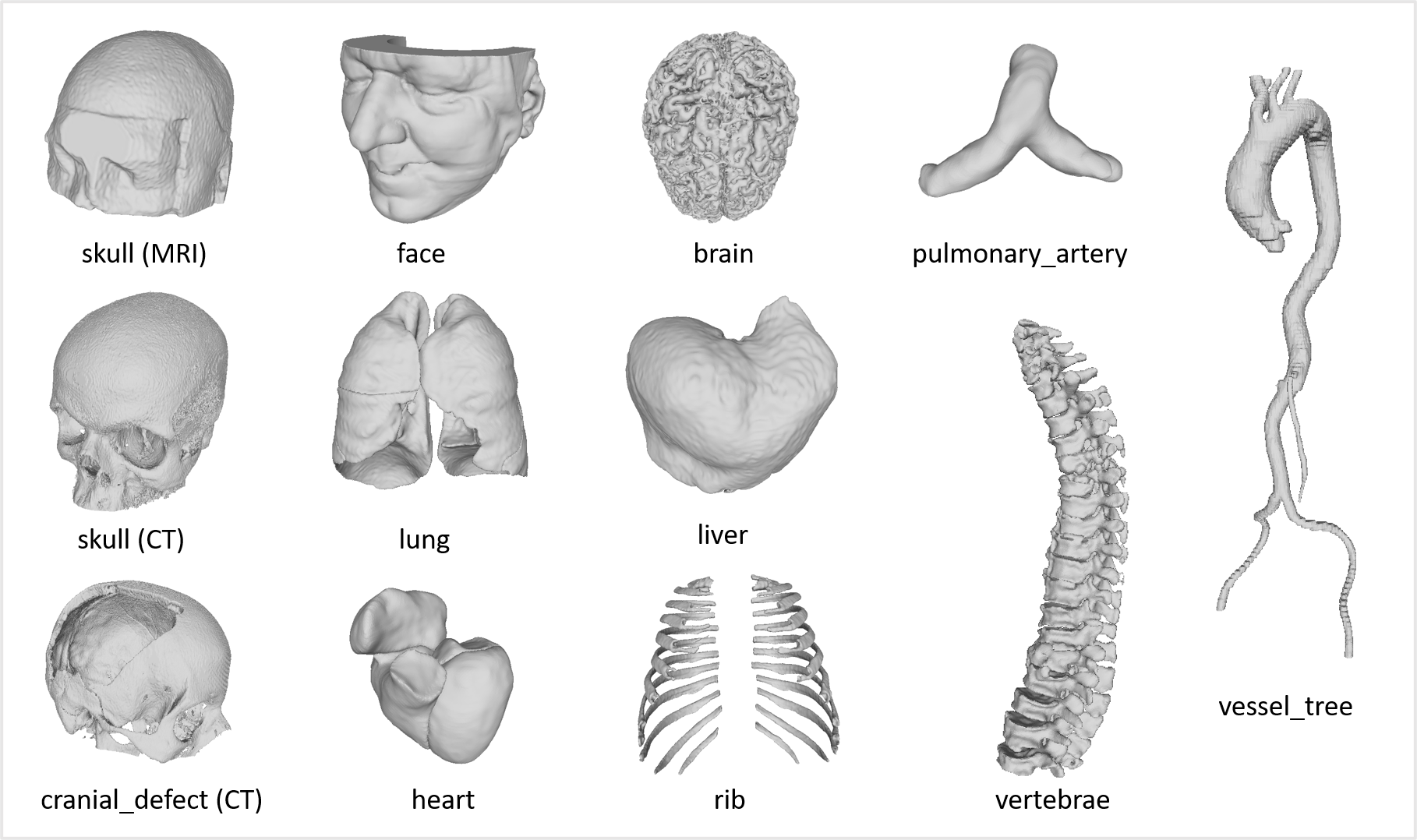MedShapeNet -- A Large-Scale Dataset of 3D Medical Shapes for Computer Vision
Prior to the deep learning era, shape was commonly used to describe the objects. Nowadays, state-of-the-art (SOTA) algorithms in medical imaging are predominantly diverging from computer vision, where voxel grids, meshes, point clouds, and implicit surface models are used. This is seen from numerous shape-related publications in premier vision conferences as well as the growing popularity of ShapeNet (about 51,300 models) and Princeton ModelNet (127,915 models). For the medical domain, we present a large collection of anatomical shapes (e.g., bones, organs, vessels) and 3D models of surgical instrument, called MedShapeNet, created to facilitate the translation of data-driven vision algorithms to medical applications and to adapt SOTA vision algorithms to medical problems. As a unique feature, we directly model the majority of shapes on the imaging data of real patients. As of today, MedShapeNet includes 23 dataset with more than 100,000 shapes that are paired with annotations (ground truth). Our data is freely accessible via a web interface and a Python application programming interface (API) and can be used for discriminative, reconstructive, and variational benchmarks as well as various applications in virtual, augmented, or mixed reality, and 3D printing. Exemplary, we present use cases in the fields of classification of brain tumors, facial and skull reconstructions, multi-class anatomy completion, education, and 3D printing. In future, we will extend the data and improve the interfaces. The project pages are: https://medshapenet.ikim.nrw/ and https://github.com/Jianningli/medshapenet-feedback
PDF AbstractTasks
Datasets
Introduced in the Paper:
 MedShapeNet
MedShapeNet
Used in the Paper:
 ShapeNet
ShapeNet
 ModelNet
ModelNet
 ShapeNetCore
ShapeNetCore
 AMOS
AbdomenCT-1K
AMOS
AbdomenCT-1K


